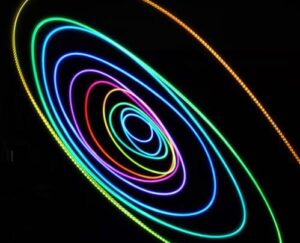Fiber lasers have had a major impact in a variety of areas, including fundamental research, molecular detection, laser surgery, and biomedical research. Experts are making further progress in a number of studies using modern fiber laser technology. It is used for mid-IR laser spectroscopy, photodynamic therapy, etc.
In this article, we will look at the applications of fiber lasers in these two areas of medicine.
The current trend is to find the best applications for fiber laser systems, as for any other medical equipment. Firstly, they provide pain relief for patients during treatment. In addition, advanced laser modules increase the effectiveness of treatment. For maximum efficiency in the shortest possible time, high-precision laser beams are used. The ability to perform delicate procedures, minimal scarring and fast recovery are other benefits of fiber lasers.
Fiber lasers for the Mid-IR Spectroscopy
Mid-infrared spectroscopy (or mid-IR) is a standard, non-destructive method of chemical analysis used in the laboratories.
New biomedical applications are of great importance due to the rising cost of healthcare and the need for rapid and non-destructive measurement technologies. In resource-constrained environments, compact designs of mid-infrared laser modules play a critical role in biomedical sensing applications.
The characteristics of fiber lasers, including benchtop applications, make them particularly suitable for biomedical applications. They provide high power spectral density and thus a high signal-to-noise ratio (SNR). And with today’s technology, final measurements are available in seconds.
The advancement of fiber laser systems has improved the clinical environment and treatment outcomes.
Fiber lasers for diabetes monitoring
Glucose monitoring in diabetes is one example of mid-infrared spectroscopy.
Glucometers are among the most widely used wearable biomedical sensors. Glucose monitoring is a necessary part of a patient’s life. They can do it either with the finger prick tests or with glucose monitoring devices worn on the body. Due to degradation, both types of devices have a limited lifespan. Mid-infrared spectroscopy can overcome some of the measurement problems. However, it can also face other difficulties.
According to modern technology, the process goes as follows: the device is placed on the patient’s skin, a flash lamp is activated, and broadband radiation is directed through the transmission fiber channel into the patient’s skin. Scattered and reflected optical signals are fed through the receiving optical fiber channels and interference filters to the arrays of CCDs. Then specialists see the information on the display.
Fiber laser systems for photodynamic therapy
PDT, or photodynamic therapy, is a treatment that uses a drug and the light of a laser beam to activate the drug. It is particularly effective in the destroying of cancerous and precancerous cells of various types including those of the lung, skin, bladder, brain and more. When it comes to cancer treatment, photodynamic therapy is used in the early stages under observation through the endoscope. Certain photosensitizers are also applied for treatment of other diseases such as bacterial, viral and fungal infections.
Common information about photodynamic therapy
Photodynamic therapy is usually used as a local treatment, which means it affects different specific parts of the body. The affected part of the body is irradiated with a laser beam from a fiber laser. Then, when exposed to light, a form of oxygen is produced that kills the cancer cells.
The custom PDT process includes 2 main stages:
- Introduction of the photosensitizers into the body;
- Light exposure.
The interval between these phases can vary from 10 minutes to 2 hours, depending on the disease and its stage. There are different methods of light exposure. It depends on the localization of the pathological project:
- Direct light exposure;
- Endoscopic light exposure;
- Intraoperative light exposure (during surgery);
- Intravenous light exposure (blood photomodification).
PDT for use in ophthalmology
In ophthalmology, fiber lasers are used to treat certain eye diseases when we talk about PDT applications. For example, they are most commonly used in the treatment of age-related macular degeneration (AMD). However, its role today remains quite limited. With this method, the photosensitizers are injected into the vein. They selectively accumulate in abnormal blood vessels. The low-power laser beam then activates the light-sensitive drugs. The drugs destroy or seal the abnormal vessels without damaging the other cells. Specialists consider photodynamic therapy as a way to slow the progression of the disease and preserve vision.
As the use of fiber lasers continues to grow in various medical fields, we can say that laser modules have proven to be effective. They have been instrumental in developing of a wide variety of fiber laser systems and obtaining useful theoretical and experimental results. This is especially true in the medical industry, where fiber lasers are widely used.
Optromix Inc., headquartered in Newton, MA, USA, is a manufacturer of laser technologies, optical fiber sensors, and optical monitoring systems. We develop and manufacture a broad variety of Fiber lasers, СО2 lasers, Ti: Sapphire lasers, Dye lasers, and Excimer Lasers. We offer simple Erbium laser and Ytterbium laser products, as well as sophisticated laser systems with unique characteristics, based on the client’s inquiry.
We manufacture laser modules using our technologies based on the advanced research work and patents of the international R&D team. Laser processes are high-quality, high-precision, easily automated manufacturing solutions that provide repeatability and flexibility.
If you are interested in Optromix fiber laser systems or Optromix CO2 lasers, please contact us at info@optromix.com



